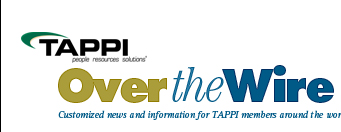Emerging Trends in the Global Tissue Industry
 Print this article | Send to Colleague Print this article | Send to Colleague
This report by Pöyry Management Consulting is the latest in an on-going series that draws on expertise from Pöyry’s global offices to update readers on opportunities and challenges facing tissue producers today. These reports by Pöyry experts will appear in Over the Wire-Tissue Edition on a bi-monthly basis.
The global tissue industry scene continues to change and evolve. Tissue suppliers are especially active, as pure plays, diversified competitors, start-ups, FMCGs, and new entrants continue to invest and grow. Converter backward integration into tissue making has increased, exports from Asia are increasing and private labels are becoming more popular in the At-Home segment. We will see new power houses and game changers like the Chinese producers (APP, Hengan, Hainan) with hectic investment activity.
It is worth noting that this segment has enjoyed historically higher returns, but manufacturing costs are heavily leveraged towards fiber costs and therefore there is more sensitivity to raw material input cost changes. We have seen profitability erosion take place in late 2010 and early 2011 due to record high market pulp and high end recycled fiber prices.
The tissue industry is the second largest consumer of market pulp in the world and market BHKP (and BSKP) usage is clearly increasing – especially because of the decline in integrated pulp and tissue manufacturing. The main driver here is the non-integrated investments in China that are based on market pulp from Brazil and Indonesia.
About 40% of market pulp used in tissue manufacturing is bought by the top 5 tissue producers that operate globally – however, buyer structure is becoming more fragmented as more and more capacity is being built in emerging markets.
The tissue industry differs from traditional paper manufacturing in the following ways: mill scale is small, the number of locations is large, converting typically takes place at the mill, and finished products are sold directly to the consumers and institutional end users. The key question for market pulp suppliers is related to the structure of the tissue industry: How to be competitive in delivering pulp to a fragmented set of smaller scale mills?
What is also different if compared with commodity grades such as publication papers or containerboard is that the number of stakeholders is high – as, after all, tissue is a consumer product. Globally, tissue producers are paying close attention to trends and requirements related to GHG, i.e. renewable energy, chemical issues, and environmentally friendly packaging (including bioplastics) and environmental labels.
On the other side, retailers have been focusing on GHG reductions and carbon footprinting, various corporate social responsibility issues, packaging and recycling. It is clear that in packaging, recycling and chemicals related to tissue, bioplastics, will be of growing interest. Another key concern that is of growing interest is fresh water issues.
For a tissue brand owner, the key question is: "What is the winning sustainability story for stakeholders and how does that impact on the kind of fiber being used?" A question related to quality is does push for ultra-quality tissue require new pulp products? Can papermaking technology enable gains from recycled fiber?
   
|

